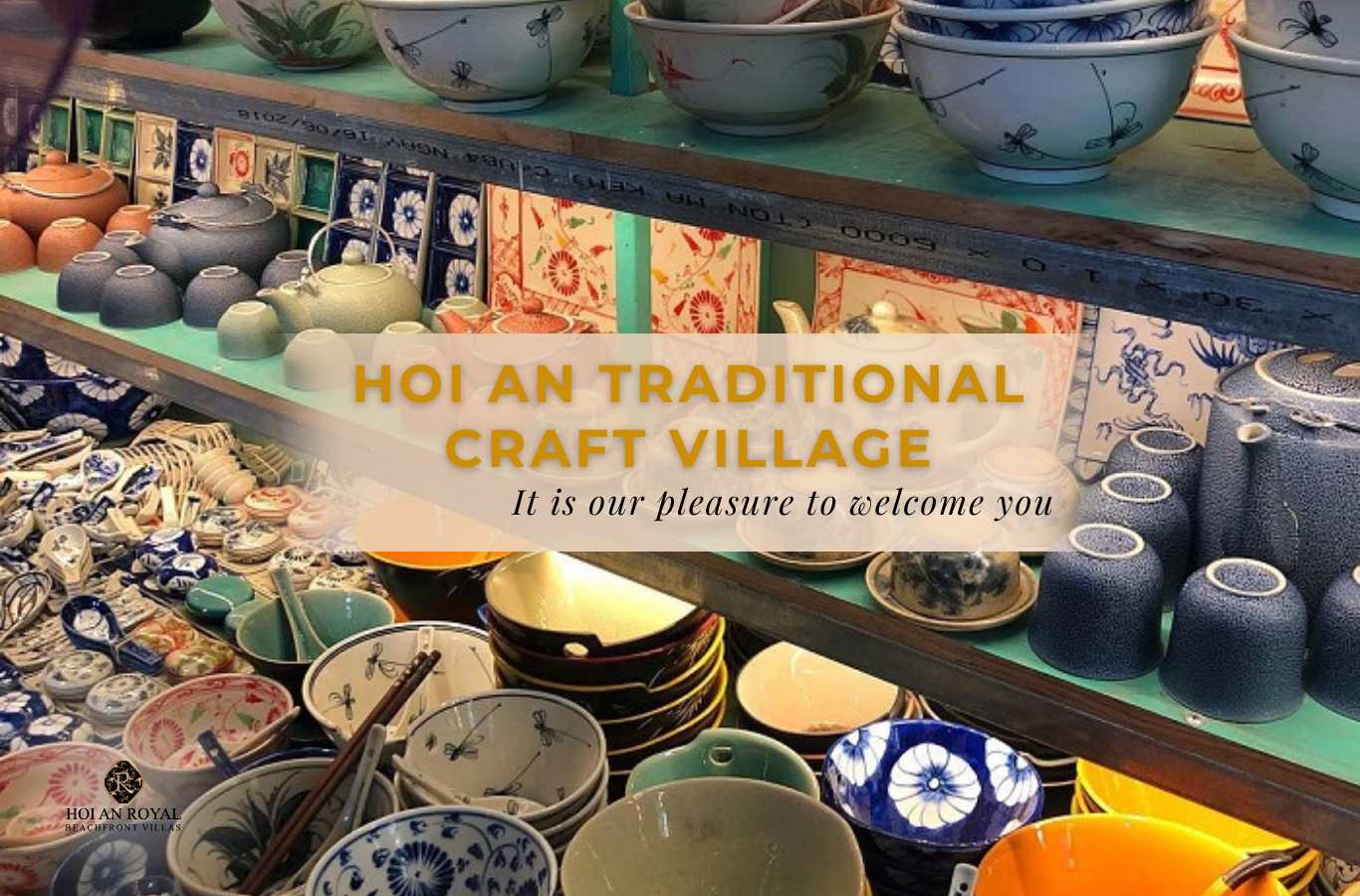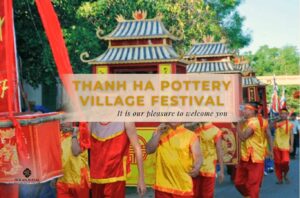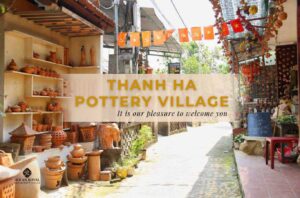To gain a deeper understanding of Hoi An’s culture, begin with the Hoi An traditional craft village. From the sound of chiseling wood to the scent of baked clay, each craft village offers a vivid cultural snapshot, reflecting the enduring spirit of Hoi An through time. Follow this article by Hoi An Royal Beachfront Villas to find out where to go, what to buy, and what to keep in mind when visiting a Hoi An traditional craft village.
Table of Contents
ToggleWhat traditional craft villages are there in Hoi An? Meaning and role
Hoi An’s traditional craft villages are communities that have preserved and developed handicrafts dating back to the 15th – 16th centuries, closely tied to the local history and culture Hoi An. They are not only places that create handicraft products but also unique cultural spaces reflecting the identity of Hoi An’s residents over centuries.
Meaning and role of Hoi An traditional craft villages:
- Preserve and promote cultural – historical values: Villages maintain traditional craftsmanship, folk art, and the unique cultural values of Hoi An, helping young generations understand and appreciate their heritage.
- Develop local socio-economy: Through the production of valuable handicraft items, craft villages contribute to promoting tourism, trade, and increasing community income.
- Create jobs and improve livelihoods: Many rural households have the opportunity to work locally, improving income and reducing labour migration to big cities.
- Contribute to sustainable tourism development: Craft villages become attractive destinations, offering tourists profound experiences of Hoi An’s culture and history through visits, exchanges, and hands-on product making.
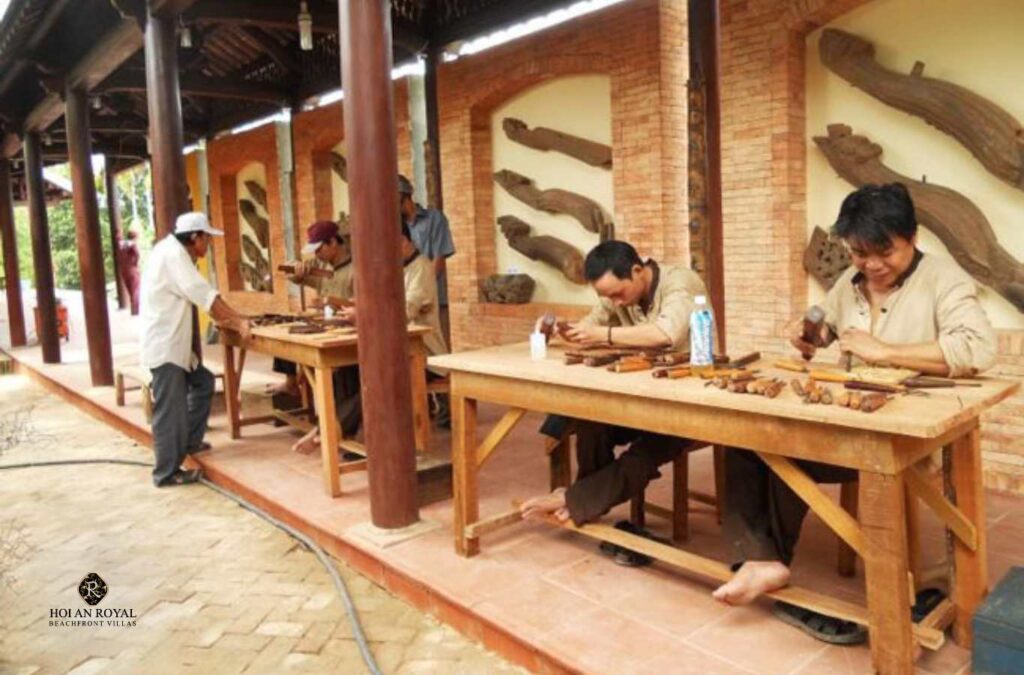
Top 9 Hoi An craft villages visited by many tourists
Phuoc Kieu bronze casting village
Located in Thanh Chiem hamlet, Dien Ban ward, Da Nang City, Phuoc Kieu Bronze Casting Village, with over 400 years of history, is one of the oldest traditional craft villages in Hoi An. It was founded in the early 17th century by Duong Tien Hien, an artisan from Thanh Hoa who introduced the craft here.
Initially, the village specialised in casting weapons and household utensils for the Nguyen dynasty. By the late 18th century, Tay Son troops chose Phuoc Kieu to produce weapons, shaping Dong Kieu statue casting village, which King Minh Mang later merged into today’s Phuoc Kieu.
The village is notable for its diverse products: from gongs, bells, and bronze statues to daily utensils like pots, pans, and incense burners. All are handcrafted, requiring artisans’ skilled techniques and physical endurance. This traditional casting technique allows Phuoc Kieu’s products to be sold not only domestically but also exported overseas.
Today, Phuoc Kieu bronze casting village continues to play an important role in preserving traditional metal work art, while also being an attractive destination for culture-loving visitors. Here, you can admire the meticulous bronze casting process and experience the unique cultural space of Quang Nam. At the same time, the village contributes significantly to the local economy, with dozens of households engaged in the craft and annual revenues reaching billions of VND.
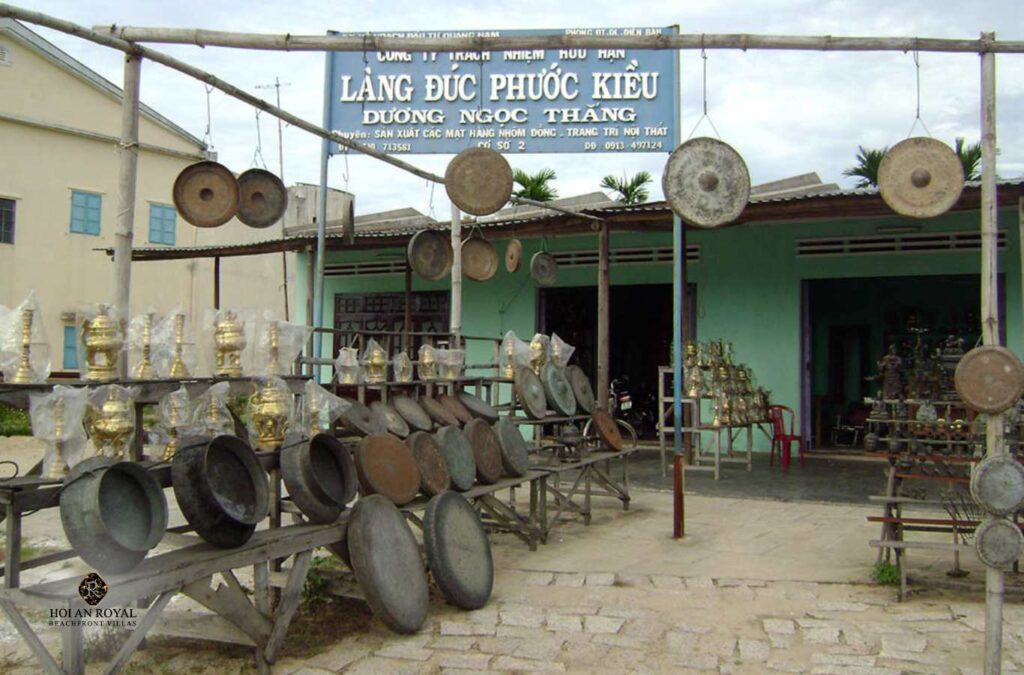
Hoi An Silk Village
Just about 1km from the ancient town center, Hoi An Silk Village (No. 28 Nguyen Tat Thanh, Hoi An Tay ward) is a must-visit when it comes to Hoi An traditional craft villages.
With over 300 years of history, the silk village is the cradle of sericulture, silkworm breeding, and silk weaving – which flourished in the 16th–17th centuries, when Hoi An was a key link on the “Maritime Silk Road.”
The silk craft not only demands a high degree of manual skill but also exceptional refinement. Visitors can experience the entire traditional process: mulberry planting – silkworm breeding – silk reeling – weaving, under the dedicated guidance of experienced artisans. This is also an opportunity to better understand ancient weaving techniques from the Champa – Dai Viet periods, which have been remarkably preserved.
The village space is a true “living museum.” Visitors will enjoy exploring:
- Ancient nha ruong (wooden houses) from the 19th century, dedicated to Ba Chua Tam Tang – revered as the founding figure of the craft.
- A collection of over 100 ao dai and traditional garments from Vietnam’s 54 ethnic groups.
- An ancient mulberry tree with bird’s-foot-shaped leaves, planted during the Champa era – a symbol of sericulture.
Beyond cultural preservation, Hoi An Silk Village also aims for sustainable tourism development. With flexible hours from 8 AM – 9 PM, it attracts thousands of visitors annually and is gradually establishing itself as a leading center for traditional silk distribution in Vietnam.
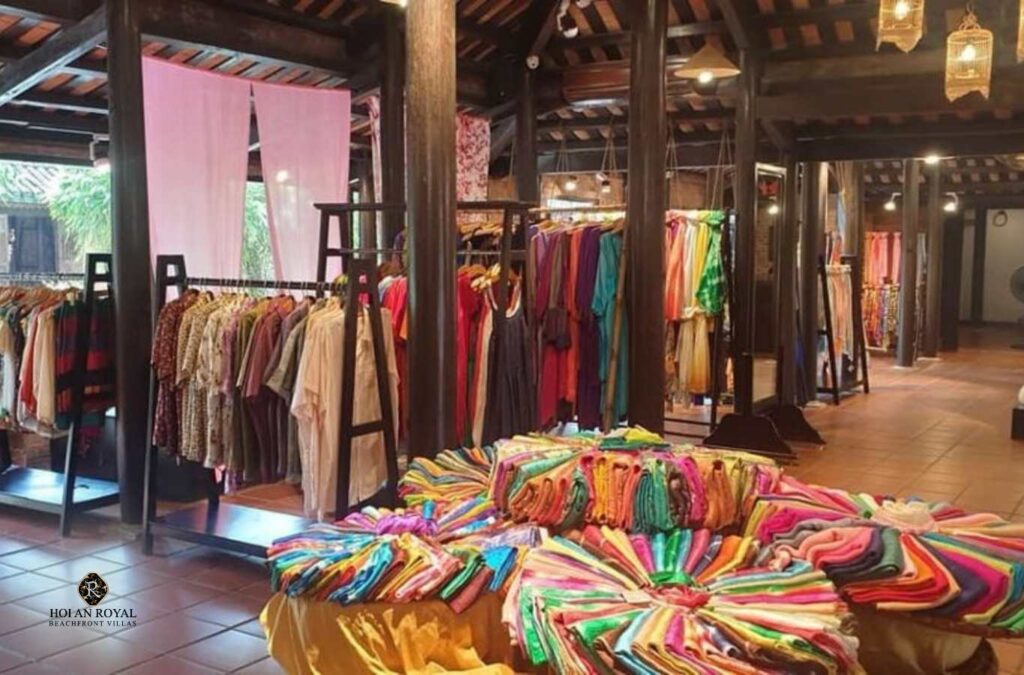
Thanh Ha Pottery Village
Thanh Ha Pottery Village is located in Hoi An Tay ward, about 2–3 km from the center of Hoi An ancient town. Nestled beside the poetic Thu Bon River, it is an ideal destination to explore the traditional beauty of ancient pottery.
The village has a history of over 500 years, formed in the 16th–17th centuries by potters from Thanh Hoa and Nghe An who migrated south. Its golden era was during the 16th–17th centuries, when Thanh Ha ceramics were used as tribute to kings and for religious constructions.
Under the Nguyen dynasty, Thanh Ha pottery was recorded in the book “Dai Nam Nhat Thong Chi” as a distinctive specialty of Quang Nam. Though the craft declined at times, it has been strongly revived thanks to the efforts of local artisans.
Thanh Ha pottery is famous for traditional items such as jars, vases, teapots, 12-animal zodiac statues, flower vases, and terracotta tiles used in Hoi An architecture. All are handcrafted following age-old methods.
From kneading clay, shaping, sun-drying, firing in wood kilns, to finishing, each step requires meticulous care and skilled craftsmanship. This gives Thanh Ha pottery its lasting value in the life and culture of Hoi An people.
A unique highlight is Thanh Ha Terracotta Park, displaying hundreds of pottery pieces, ancient artifacts, and miniature models of famous ceramic architecture from Vietnam and abroad – offering a distinctive visual experience.
The village also preserves the annual ancestor-worship ritual at Nam Dieu Temple – a 19th-century structure serving as the cultural and spiritual hub of the potters’ community.
Visitors to the village not only explore its history but can also try making pottery themselves with artisans – a cultural tourism experience rich in local identity.
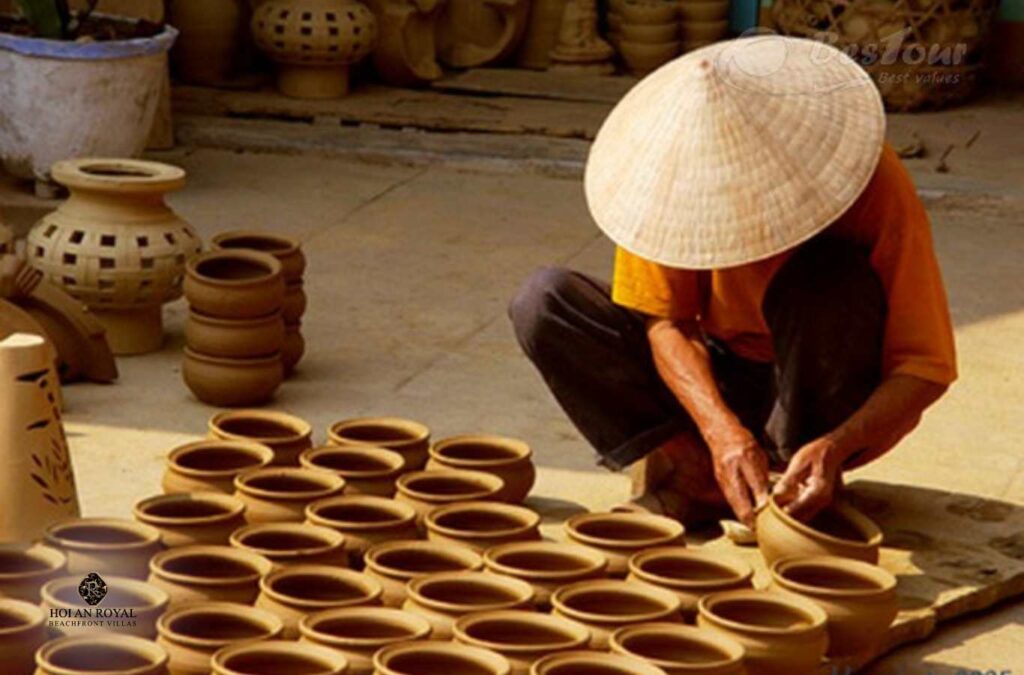
Kim Bong Carpentry Village
Kim Bong Carpentry Village is located in Trung Ha hamlet, Hoi An ward, only about 2 km from the center of Hoi An ancient town. Situated on the right bank of the lower Thu Bon River, the village preserves the essence of traditional carpentry over more than 500 years.
Its origins trace back to the 16th century, when craftsmen from Thanh Hoa and Nghe An brought their trade south. From there, Kim Bong grew into one of the most famous craft villages in southern Vietnam.
Its golden era was in the 16th–17th centuries, when the Hoi An port flourished. The carpentry craft branched into three main groups: construction woodwork, shipbuilding, and household woodwork, all contributing to shaping the architecture of old Hoi An.
Masonry, spiritual carving, and decorative reliefs also developed alongside, resulting in intricate works that adorned temples, pagodas, ancient houses, and ships of historic Hoi An.
Key products from the village include: nha ruong (wooden houses), wooden statues, interior furniture, boats, and household woodenware. All are handcrafted using traditional chiseling, sawing, and planing techniques.
What gives Kim Bong woodwork its value is the meticulous detail, product durability, and flexible utility – serving daily life while carrying high artistic merit.
The village still retains its rustic charm, with many traditional workshops. Visitors can stop by to watch the crafting process and chat with artisans right at their workbenches.
The village has free entry, making it a friendly community tourism site where visitors can gain deeper insights into Hoi An’s local culture.
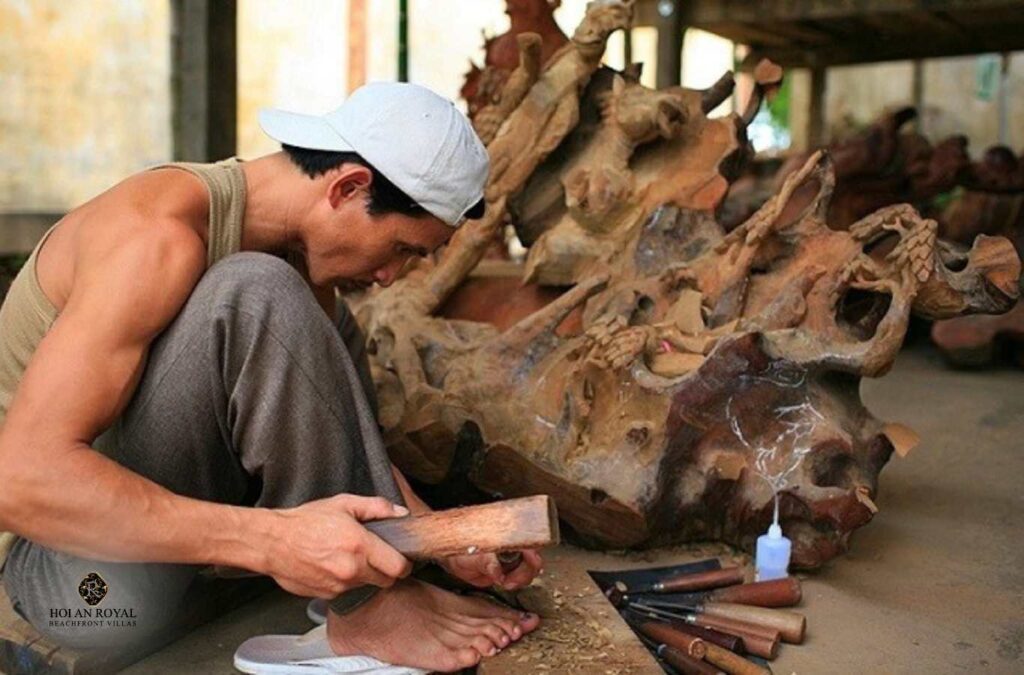
Tra Que Vegetable Village
Tra Que Vegetable Village is located in Hoi An Tay ward, about 2.5–3 km from Hoi An ancient town. Surrounded by the De Vong River and Tra Que Lagoon, the village enjoys favorable conditions for clean agriculture, especially organic vegetable farming.
With a history of over 300 years, Tra Que began when fishermen shifted to growing vegetables after natural disasters affected their fishing livelihood. Initially named “Nhu Que” due to the vegetables’ aroma resembling wild cinnamon, the village was later renamed “Tra Que” by King Gia Long in the early 19th century, inspired by the fragrance and refined cultivation techniques—symbolizing a blend of tea (tra) and cinnamon (que).
The village specializes in growing more than 20 types of typical herbs and vegetables such as mint, basil, coriander, mustard greens, perilla, chives, and bitter herbs. Each has a distinctive flavor, forming the soul of Hoi An’s cuisine.
Moreover, Tra Que Vegetable Village preserves traditional organic farming methods: fertilizing with algae from the Co Co River, watering with fresh water, and avoiding chemical pesticides. This results in vegetables that are always fresh, fragrant, and safe.
In addition to supplying the domestic market, Tra Que contributes to building the Vietnamese organic vegetable brand internationally, reinforcing its role in the green agriculture sector.
Tra Que is also an attractive ecotourism destination. Visitors can tour the vegetable fields, learn how to plant, harvest, and prepare local specialties like banh xeo, mi Quang, and banh vac. The village’s peaceful, green space suits nature lovers seeking relaxation and authentic rural life in Hoi An.
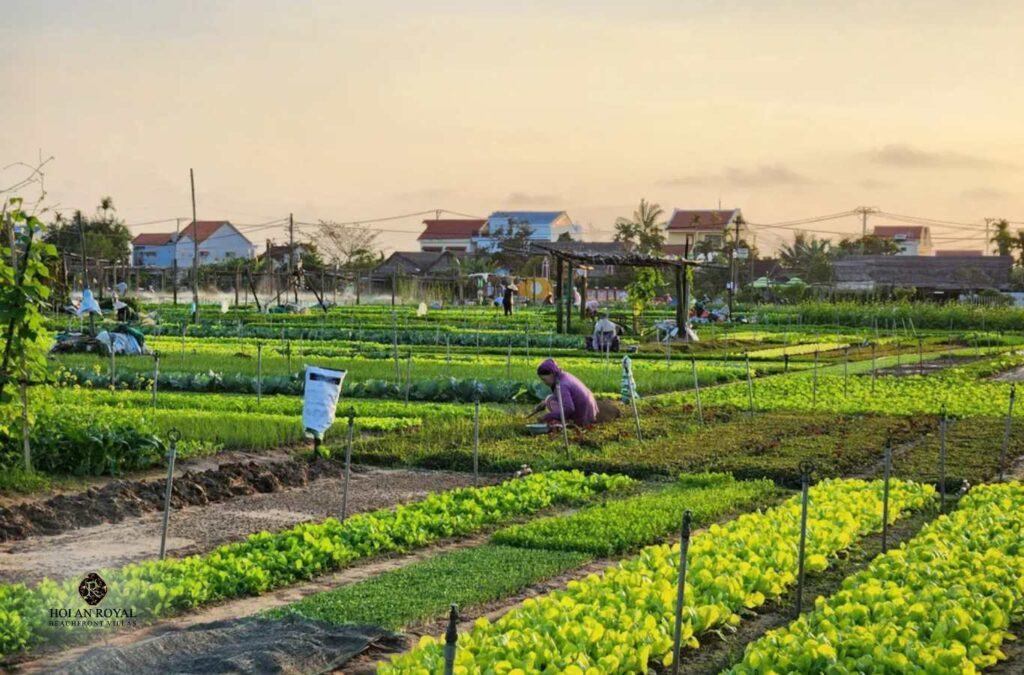
Ha Linh Lantern-Making Village
Located in Son Pho 1 quarter, Hoi An Dong ward, Ha Linh Lantern Village is one of the most renowned traditional lantern-making sites in the ancient town. It serves not only as a production workshop but also as a cultural destination for visitors interested in local traditions.
The lantern-making craft in Hoi An dates back to the 17th century, during the bustling days of the Hoi An trading port, which welcomed many immigrant groups, especially the Minh Huong and Thanh people. They brought the craft with them and passed it down through generations, shaping a unique identity for the town.
At Ha Linh, the lantern-making process is still preserved in its traditional, handcrafted form. From selecting mature bamboo soaked in saltwater and carefully sun-dried, to choosing colorful silk fabrics – all stages are meticulously carried out by skilled artisans. Every step, from framing, gluing fabric, to hand-painting patterns, is performed manually with care and precision.
A standout feature of Ha Linh lanterns is their foldable design – making them convenient for transport, packaging, and storage, especially appealing to tourists as souvenirs.
Beyond aesthetics, lanterns also hold deep cultural and spiritual meanings. Hoi An locals believe hanging lanterns brings good luck, drives away evil spirits, and expresses hospitality to friends from all over.
In 2011, Hoi An’s lantern-making craft was officially recognized as a National Intangible Cultural Heritage – acknowledging the village’s contribution to both spiritual life and the local economy.
Visitors to Ha Linh can witness the lantern-making process firsthand and participate in crafting lanterns with artisans – a fun and meaningful cultural activity. The site also offers a wide variety of handmade products for tourists to purchase as gifts.
During holidays, Tet, or the Mid-Autumn Festival, Ha Linh produces thousands of lanterns for domestic and international markets, while creating stable employment for many local households.
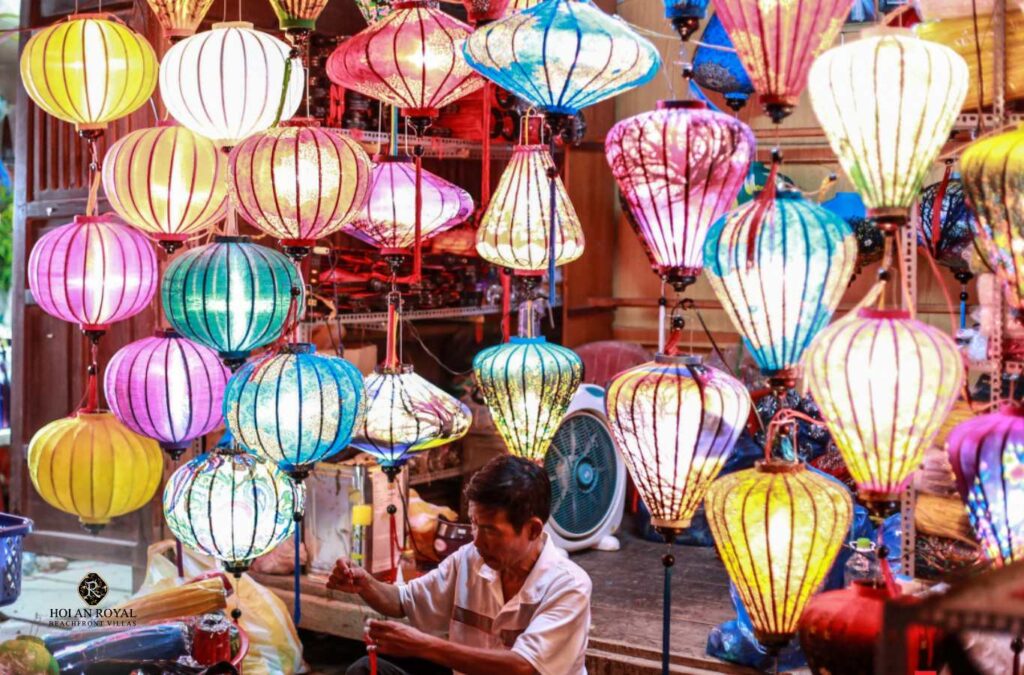
Ban Thach Mat-Weaving Village
Ban Thach Mat-Weaving Village is located in Nam Phuoc commune, about 10 km from Hoi An ancient town. The village lies between three major rivers: Thu Bon, Ly Ly, and Truong Giang – a region well-suited for growing sedge and weaving mats.
With a history of over 500 years, the craft began when settlers from northern provinces migrated south, bringing mat-weaving with them. Thanks to abundant raw materials, the trade quickly flourished and formed a distinctive brand.
In the past, Ban Thach mats were once used as royal tributes, famed for their durability and intricate patterns. They were also a key commodity in trade exchanges across Hoi An and neighboring regions.
The mats are made from sedge and jute, which are processed manually and then woven into various types: plain mats, floral mats, and patterned mats – all designed to be both beautiful and durable, satisfying aesthetic and practical needs.
Each mat is a result of skilled craftsmanship and long experience. Artisans must gauge hand pressure, blend colors, and create patterns – all done manually on traditional weaving frames. Today, the village continues the craft, offering stable employment for many families and contributing significantly to the local economy through a combination of handicraft and tourism.
Ban Thach not only maintains the craft but also actively participates in cultural festivals such as Hue Festival and My Son Impression, showcasing mat-weaving art to both domestic and international tourists.
Visitors to the village can observe the weaving process firsthand, try weaving themselves, and purchase mats as souvenirs. The simple village setting, with lush green sedge fields, offers a unique ecological experience.
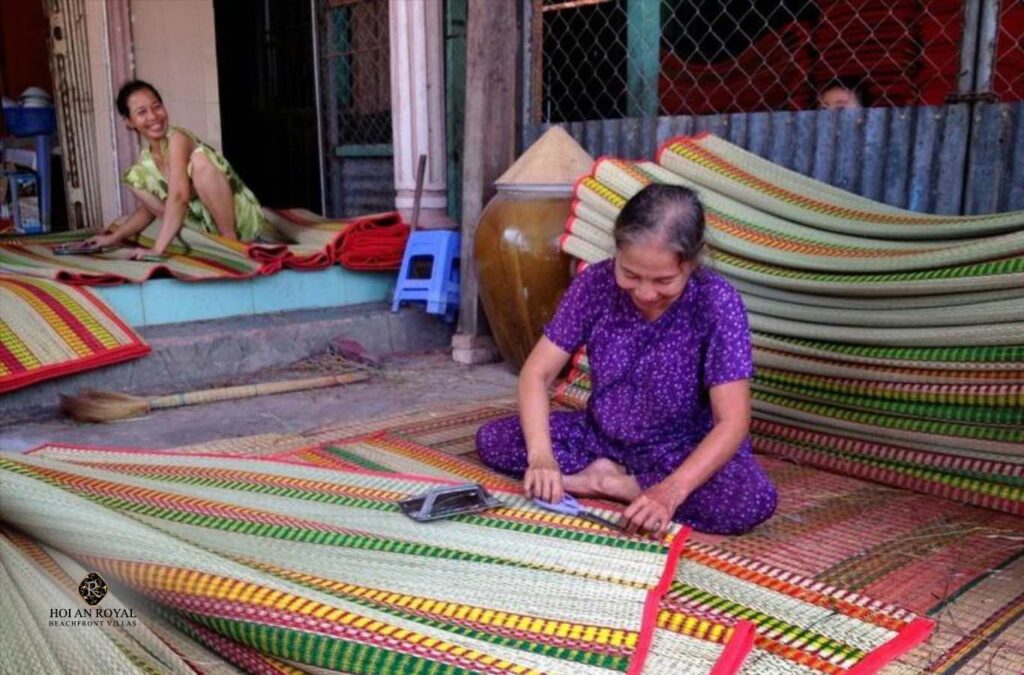
Cam Ha Kumquat Village
Cam Ha Kumquat Village, located in Hoi An Tay ward, is known as the “ornamental kumquat capital of Central Vietnam.” With a cultivation area of about 70 hectares and over 300 households participating, the village brings a lively Tet atmosphere every year.
The kumquat-growing tradition here has existed for more than 100 years, closely tied to the local community’s economic and cultural life. Kumquats are not only ornamental plants but also symbols of prosperity and wealth.
Cam Ha kumquats are meticulously cared for and known for their round, uniform, golden-yellow fruits. The trees are artistically shaped into various forms such as animals, dragons and phoenixes, or decorative vases—each with its own feng shui significance.
During each Tet season, the village supplies about 70,000 kumquat trees to markets across Central Vietnam and the Central Highlands. Some large pots are valued at tens of millions of VND, providing residents with high and stable income.
The kumquat trade offers not only economic value but also cultural identity. Each year, Hoi An holds the Ornamental Kumquat Festival, featuring cultural events, art performances, and kumquat tree shaping displays.
The village has also developed a community tourism model: visitors can tour the kumquat gardens, learn about the planting and pruning process, and enjoy kumquat-based products like tea, jam, and dried fruit.
This combination of kumquat cultivation and tourism has made Cam Ha an attractive eco-destination, contributing to the local new rural development program and promoting regional OCOP (One Commune One Product) products.
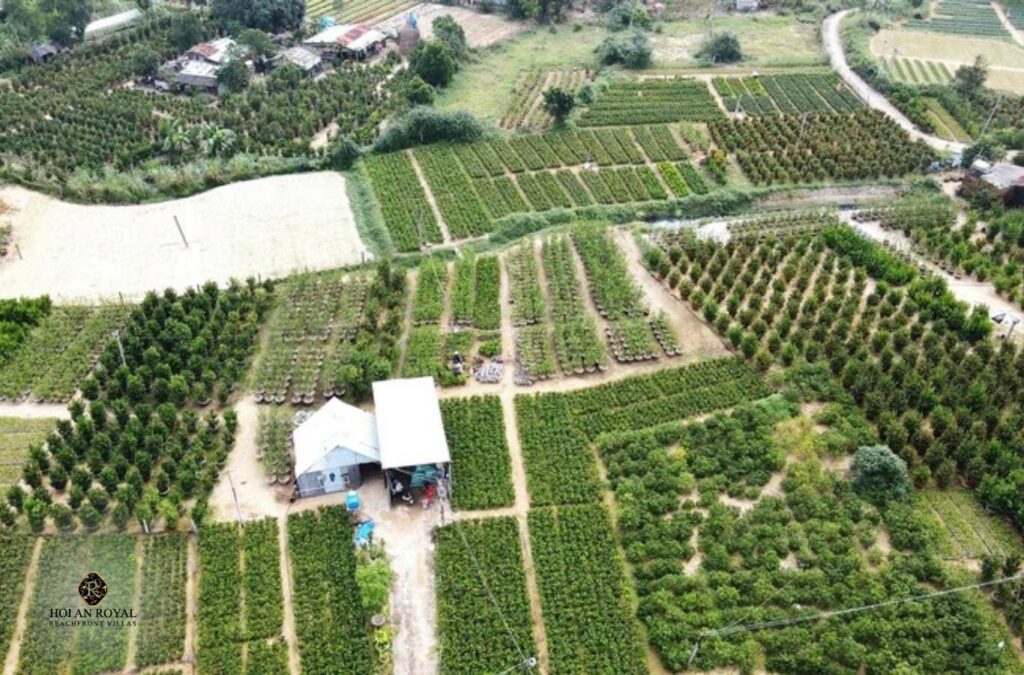
Hoi An Fishing Villages
Scattered along rivers and the coast in Hoi An, Hoi An Dong and Hoi An Tay wards, Hoi An fishing villages preserve the rustic way of life that has defined the town’s people for generations. These are communities of fishermen long engaged in fishing, net casting, net weaving, and boat building since Hoi An’s time as a bustling trading port.
Fishing is more than a livelihood—it’s a rich source of folk culture. From seafaring knowledge and seafood processing to traditional songs and chants such as ho giut chi, keo luoi, ve ca, and ve ba trao, these performances reflect the labor rhythm and the free-spirited, sea-loving soul of the riverine people.
Among these, Cam An has the highest proportion of sea-based households, with nearly 90% of the population engaged in fishing. Other villages like Thanh Nam and Cam Kim also retain their traditional fishing lifestyle and the strong sense of community among people living by the sea.
Today, Hoi An fishing villages are not only economic hubs but also unique experiential tourism sites. Visitors can join locals in casting nets, learn how to make dried fish, listen to folk songs on the water, and enjoy fresh seafood right on the beach.
Amidst modern life, these fishing villages remain serene, untouched, and full of the essence of a coastal hometown. They are the soul of Hoi An—where culture and life flow with each wave, each paddle stroke, and each drop of sweat flavored by the sea.

When is the best time to visit Hoi An’s craft villages?
The best time to visit Hoi An traditional craft villages is from early morning to late afternoon, when the weather is cool and craft activities are in full swing.
Most villages open between 7 AM and 8 AM and close around 5 PM to 6 PM daily. If you want to experience the local market atmosphere, visit Ban Thach Mat-Weaving Village early in the morning during the busy local market session for an authentic rural vibe.
However, it’s advisable to avoid visiting during lunch breaks (12 PM to 2 PM), as production workshops usually pause operations. Additionally, heavy rainy days are not ideal since many craft activities take place outdoors, making the experience limited and the village atmosphere quiet.
Recommended souvenirs to buy when visiting Hoi An’s craft villages
When visiting the traditional craft villages in Hoi An, you’ll find many unique souvenirs that reflect the region’s cultural identity and artisanal excellence. Below are some recommended items to buy:
- Hoi An lanterns: A signature symbol of the ancient town, these lanterns are handmade from bamboo frames and colorful silk fabric. They come in various shapes such as hexagonal, garlic-shaped, round, and revolving lanterns. Beyond their beauty, they symbolize good fortune and prosperity.
- Hoi An silk: Handwoven from soft, cool, naturally lustrous silk, this material is popular for making ao dai, scarves, or luxurious gifts. Hoi An silk is highly favored for its quality and elegance.
- Clay Whistles: Made from clay in Thanh Ha Pottery Village, these toys are shaped into fun forms like the 12 zodiac animals, chickens, birds, and children herding buffalo. When blown, they produce playful sounds—making them meaningful gifts for children and lovers of traditional culture.
- Thanh Ha ceramics: Traditional handmade products such as jars, vases, tea sets, and decorative items are crafted using ancient techniques, showcasing the cultural depth of Hoi An.
- Phuoc Kieu bronze wares: Fine bronze artworks including statues, gongs, bells, and intricate decorative items reflect the skill of artisans from Phuoc Kieu Bronze Casting Village.
- Kim Bong woodcrafts: Artistic wood products such as furniture, wooden statues, and décor are handmade from precious wood, offering both practical use and high artistic value.
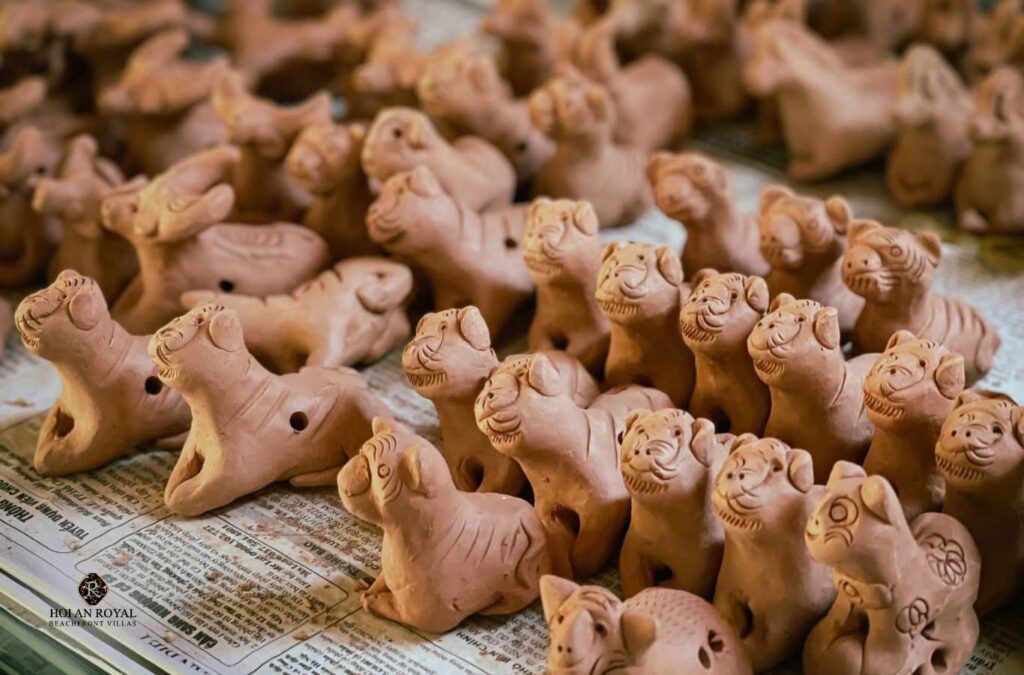
In addition to traditional tours, many visitors now enjoy hands-on activities at craft workshops. To find a suitable experience, you can explore more options [here].
Essential tips for visiting craft villages
To ensure an enjoyable and respectful visit to the Hoi An craft villages, keep in mind the following important notes:
- Respect the customs and traditions of the local people, and avoid disrupting artisans during their production activities.
- Do not touch unfinished products or tools unless permitted by a guide or artisan at the workshop.
- Maintain cleanliness by not littering within the craft village areas, helping preserve the environment and rural scenery.
- Learn about entrance fees or experience-related costs in advance to be well-prepared for your visit.
- Wear lightweight clothing and comfortable footwear. Bring water and a hat if you plan to be outdoors for extended periods.
- Prioritize purchasing handmade products onsite as a practical way to support local communities and preserve age-old traditions.
From Hoi An Royal Beachfront Villas, it only takes a few minutes to reach the Hoi An traditional craft villages—where the soul of Hoi An lives on through every handcrafted item. Each village offers a distinct flavor, from the vibrancy of lanterns to the quiet charm of woodcraft and ceramics.
